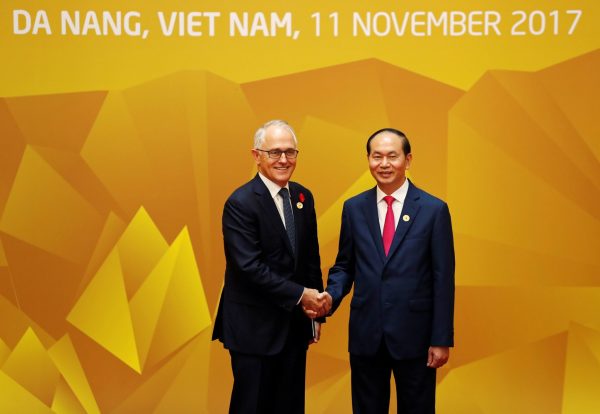Some economies in the region are busy catching up to the technological frontier. But those that are approaching it or those that are already there are more concerned about stagnation. Indonesia is facing this risk, and China faces similar risks. Australia continues to be concerned about productivity and where it might be found, and Singaporeans are debating their productivity performance.
Underlying this growth challenge is the management of economic policy in two dimensions.
One driver of progress will be a greater degree of openness. As the Australian Productivity Commission has observed, significant policy impediments to economic integration remain. Reducing those impediments will generate significant gains through lower prices, better value-chain integration, more efficient production and so on. This change will be necessary but not sufficient.
Another driver will be structural reform. A coherent approach to reform will promote trade as well as meet the expectations of good regulatory practice. The structural reform agenda has an international component, since regulatory barriers to trade are now more important than those at the border. Tackling these barriers demands a form of international cooperation which goes beyond bargaining. For this purpose, Professor Bernard Hoekman at the European University Institute proposes that sectoral regulators and business people work together across countries under the principles of good public policy.
The second big challenge in the region is the swing to protectionism.
The APEC leaders declared at their 11 November meeting in Vietnam that integration has ‘spurred significant economic growth and employment, but the gains have been spread unevenly to different segments of our societies’. A more inclusive distribution of the benefits of integration is important in its own right and mechanisms should be sought for that purpose. A failure to do so will aggravate the current shift to protectionism, which respondents to the Pacific Economic Cooperation Council 2017–18 State of the Region survey saw as the greatest risk to growth.
Other challenges are responding to the two great reorganisations under way: one of production processes and the other of businesses.
Already there was concern that the extension of value chains in goods production (which had become a comfortable frame of reference) had peaked, precipitating a decline in the growth of trade relative to growth in GDP. New technology like robotics and 3D printing might now lead to the reshoring of production. Reshoring may create opportunities, but at the same time a restructuring of value chains could cut opportunities for exporters in the region and for Australia, which is a supplier of resources and services to offshored value chains.
Businesses are also being reorganised. Digital technology is revolutionising many services traditionally provided in bricks and mortar. For example, Amazon has just opened a new ‘fulfillment centre’ in Australia. The centre is a service used by e-commerce businesses to outsource warehousing and shipping to Amazon. It is regarded as a major threat to traditional retailers. Digital technology allows peers to share assets (like Airbnb) and once established, digital platforms roll out bundles of services (like the Go group moving service).
More data is flowing across borders to processing centres (such as in banking), for value adding (such as that performed by professional services providers) and as inputs to goods production processes (such as elements of design). The challenge here is not so much regulatory reform as regulatory restraint, as in many of these new markets there is no regulation. Yet its imposition when badly applied could dismantle the new business models and deny the opportunities on offer. This becomes a regional issue in the context of data flows over borders, where there is also the risk of a protectionist response.
These challenges carry with them the risk of degenerating into a vicious cycle: slower growth and protectionism could reinforce each other, or the failure to embrace new business models may hold back productivity growth. But they also contain opportunities for a virtuous cycle where elements reinforce each other in a positive way. The outcome ultimately depends on whether relevant stakeholders can develop the required competencies in managing change, adapting to new technology and taking advantage of greater openness.
A key part of the APEC mission has always been to form a community of economies to share experience and create clear expectations about each other’s plans. Now more than ever, that mission is vital for the future prosperity of the region.
Christopher Findlay is Acting Director of the Institute for International Trade at the University of Adelaide.
This article is part of an EAF special feature series on 2017 in review and the year ahead.

